Photos courtesy of McElhanney.
Category: Special Projects
Schreyer Award and Award of Excellence winner: McElhanney
Glacier National Park, 650 km east of Vancouver, is home to a unique transportation corridor that combines the Trans-Canada Highway, the Canadian Pacific Railway, and a concentrated collection of high-frequency avalanche trails. The Parks Canada Agency selected McElhanney to improve the safety and reliability of the corridor by implementing industry-leading security measures.
These solutions, integrated into an existing, complex avalanche prevention program, reduce the risk for road users and the railroad and will help Canadians keep moving all year round.
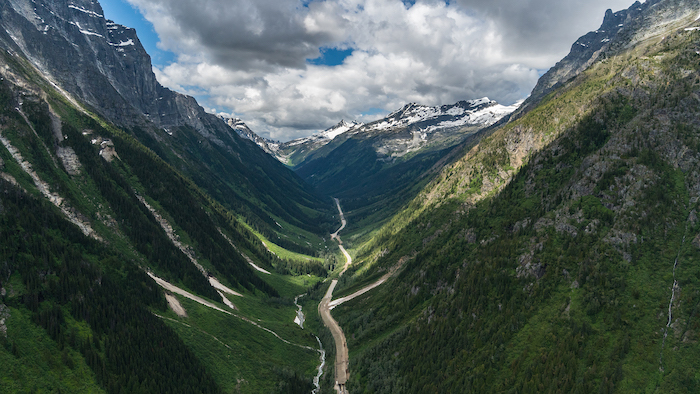
Rogers Pass is a transportation corridor in the middle of a concentrated collection of high-frequency avalanche paths.
An unprecedented system
Under the supervision of the Parks Canada Agency, McElhanney, who is acting as primary advisor, worked with Dynamic Avalanche Consulting to develop a new avalanche protection project along 27 miles of the Trans-Canada Highway through Glacier National Park. The project began with an analysis of the existing avalanche program and the identification of priority measures to limit the damage. The process also included environmental and cultural resource considerations, unique procurement practices, and construction management in challenging environments.
McElhanney and his partners planned, designed, prepared the tender and supervised the construction of 2 km of snow nets, which mitigate avalanches in three critical paths. There were no applicable North American design standards for these nets, so the team turned to Swiss guidelines.
The net prevents snow from being released in the launch area and causing an avalanche, making active control superfluous. These nets are now a leading example of how containment can be effective on a large scale in difficult terrain.
The team also led the installation of 13 remote avalanche control systems (RACSs) that use explosives to trigger avalanches in five key paths. This agreement made it unnecessary for the Parks Canada Agency and the Canadian Armed Forces to conduct artillery control at the park boundaries. Instead, the setup allowed these paths to be controlled at the same time as artillery control in other areas.
In addition, McElhanney led the design, tendering and construction of a 19.5 m high reinforced earth mountain to reduce the likelihood of skid plate avalanches reaching the highway and blocking the snow shed portal.
To aid in avalanche forecasting decision making, McElhanney studied infrasound and Doppler radar technology. Infrasound arrays, which can detect the low-frequency sound waves generated by avalanches, and Doppler radar systems, which can detect avalanche movements, were previously used in small installations, but never on the scale necessary for Glacier National Park.
Initially, McElhanney worked with Montana State University (MSU) and industry partners to develop a single infrasound array pilot program, which was endorsed by forecasters at the Parks Canada Agency and assisted with control and closure decisions. McElhanney then led the procurement and calibration of a network of 13 overlapping infrasound arrays and four Doppler radar systems, resulting in the world’s largest avalanche detection network (ADN) of its kind.
This ADN enables forecasters to receive real-time warnings about avalanche activity that will help them assess avalanche danger, plan road closures and select targets during artillery control. The network has advanced the use of this technology in industry by demonstrating its capabilities on an unprecedented scale and level of complexity.
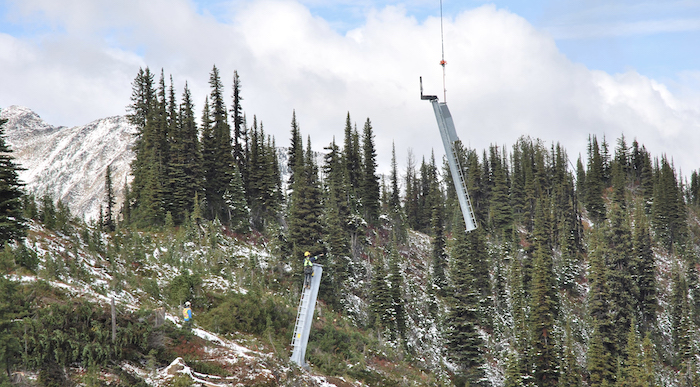
A Remote Avalanche Control System (RACS) at the eastern end of the park helps to increase the efficiency of the avalanche program.
A challenging environment
The sheer number of avalanche trails – 135 – that affect the road and railroad through Glacier National Park makes it one of the most difficult transportation corridors in the world to implement and maintain an effective avalanche detection and mitigation program. The team’s suggestions were to optimize the Parks Canada Agency’s existing complex program, which included numerous snow sheds, static defenses and storage areas (i.e., safe parking during avalanche control), separate highway and rail blocking blocks, and avalanche control using two 105mm mobile devices. Howitzer rifles that fire at 270 targets from 16 overlapping gun positions.
The area is famous for its steep terrain and dense forests. The team’s access to remote areas to carry out its work has been a constant challenge. McElhanney hired certified mountain guides to take its designers to some of the most exposed locations and field workers were trained in rope access. Some locations had to be searched for unexploded howitzer shells before ground disruption could occur.
McElhanney engineers relied on site exploration and expertise with LiDAR mapping techniques and data (light detection and ranging) during the design process. This was of crucial importance in order to anticipate and avoid measurement errors from the originally assumed terrain heights. Construction costs remained in line with the Parks Canada Agency’s expectations.
McElhanney performed more than 50 extensive site inspections during the design phase. The park’s very short summer season and extreme weather coupled with the project’s schedule meant there was no way to make up for the late fieldwork. the only option was to do it once and get it right.
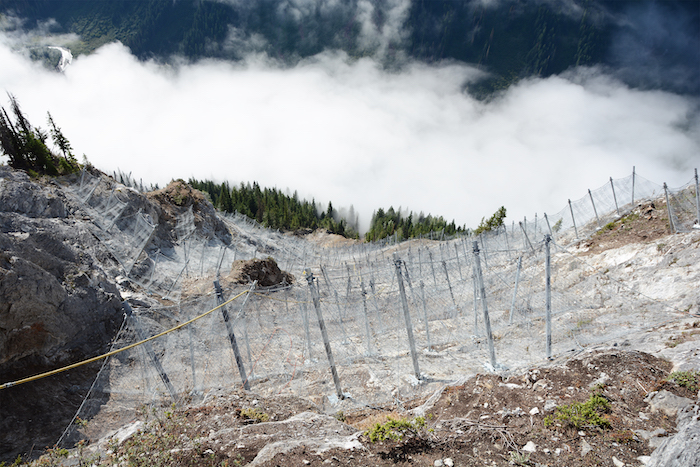
Nets were installed to prevent snow from being released in the launch zones. This eliminates the need for avalanche control in these paths.
Loosen up
“Revelstuck” is the most popular phrase among locals in the Rogers Pass area to describe avalanche closures on the freeway as it affects people trying to travel through nearby Revelstoke, BC, which is a boon to the economic impact of avalanche-related closings are significant.
McElhanney’s analysis found that approximately $ 24 billion worth of cargo is carried on the highway between Alberta and British Columbia every year – and that doesn’t include the value of the cargo that is transported by rail, which also has a significant economic impact . Road freight traffic valued at around 2.7 million US dollars crosses the avalanche corridor every hour. Every minute of the motorway closure that can be prevented by the mitigation program therefore represents a considerable economic advantage and at the same time makes this important connection safer for everyone.
In addition to the freight-related benefits of the transportation corridor, it’s important to recognize that Glacier National Park draws large numbers of tourists to its pristine landscape and Rogers Pass National Historic Site. You drive in private vehicles and coaches on the freeway and aboard the Rocky Mountaineer along the railroad.
The area also attracts hikers, climbers, skiers, and mountaineers who all need a safe and reliable highway.
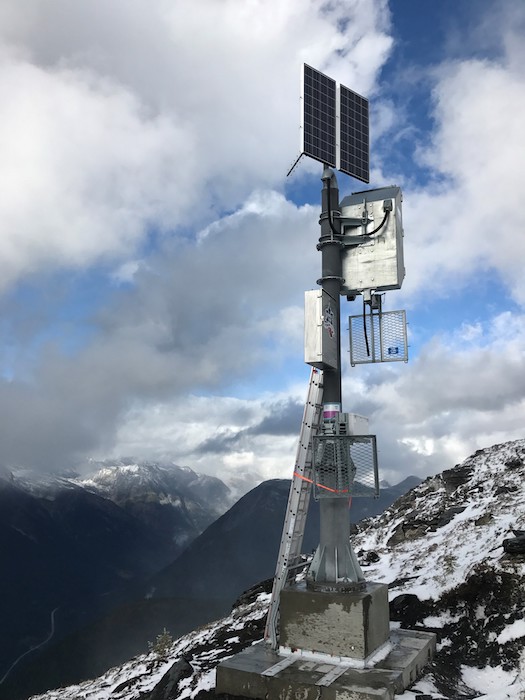
This RACS is solar powered and its explosives are biodegradable.
To protect the environment
Glacier National Park was established in 1886 and is under state protection. McElhanney worked closely with the Parks Canada Agency and various stakeholders to minimize visual impact and possible disruption to natural landscape and wildlife throughout the corridor.
Therefore, McElhanney has taken on the mandate of the agency for sustainability in the development of their avalanche protection measures. In return, the agency’s own environmental team developed measures to reduce the environmental impact on the basis of McElhanney’s draft. These were further refined through the collaboration between the teams in the course of completing the design and further considerations were incorporated into the construction contracts.
McElhanney, for example, managed contracts for 13 RACSs, 13 infrasound arrays, and four Doppler radar systems powered by “green” sources, including methanol fuel cells and solar cells. In addition, the explosives detonated with the RACSs are biodegradable, so no long-term waste ends up in the remote, mountainous area.
In McElhanney’s designs, up to 200,000 m3 of local materials – such as landslide debris – were reused as filler material for the additional traffic congestion areas and the avalanche stop berm. The company also oversaw the expansion of two large bypass berms at the Beaver River site to protect the area from future landslide activity.
Glacier National Park is home to grizzly bears, wolverines, moose, owls, and endangered species such as caribou. McElhanney kept wildlife passages in mind when developing systems. The snow nets, for example, have regular openings to reduce intrusion into the natural paths that wild animals can migrate.
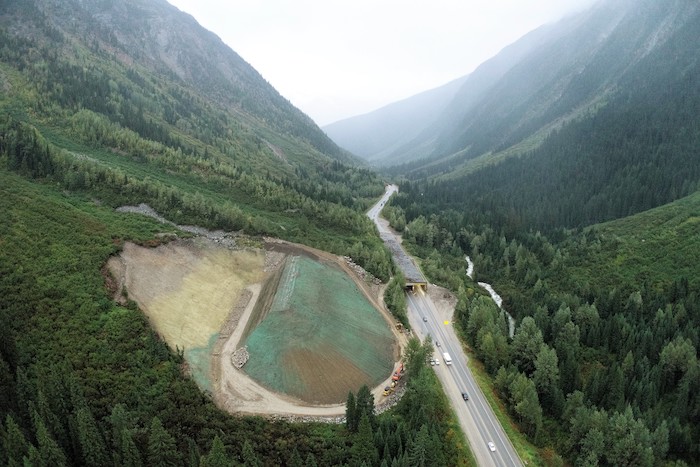
The 19.5 m high berm “Mounds” reduces the likelihood that skid plate avalanches will reach the motorway and block the snow discharge portal.
to save time
Parks Canada Agency goals included improving highway safety, winter highway reliability, and the efficiency of the avalanche protection program. To ensure that all of these goals were met, team members assessed, assessed, and recommended specific mitigation options before administering and executing the planning, design, bidding, construction supervision, and contract management for the prioritized options.
The resulting suite of implemented solutions reduced the area’s avalanche hazard index by an estimated 21%, the average annual winter closure time of the Trans-Canada Highway by approximately seven hours, and the average annual avalanche rescue mobilization time by an estimated 14 hours.
The RACSs installed near the boundaries of Glacier National Park eliminated the need for artillery control in these areas, resulting in a reduction in mobilization time and costs. To explain this, these areas are now controlled with RACSs, at the same time as the artillery control in other areas of the park.
Additionally, the RACSs eliminated the need to close the highway to control some avalanches that only affect the railroad, reducing the overall blackout period and the associated freight impact. The snow nets and the stop berms also make avalanche control and cleaning on their paths superfluous. And finally, the ADN improves the timing and control of closures along the motorway by giving more support to the forecasters’ decision-making process.
Trans-Canada Highway Avalanche Defense, Rogers Pass National Historic Site, BC
Award-winning law firm (Prime Consultant): McElhanney, Calgary (Naginder Jabbal, P. Eng., C. Eng., PMP; Alvin Hemmingson, C. Tech, RSIS; Jaime Sanderson, EIT; Richard Singer, P. Eng., PMP; Scott McTavish, CET; Jenny Lines , P.Eng.).
Owner: Parks Canada Agency.
Other key players: Dynamic Avalanche Consulting (avalanche modeling and design).



Comments are closed.